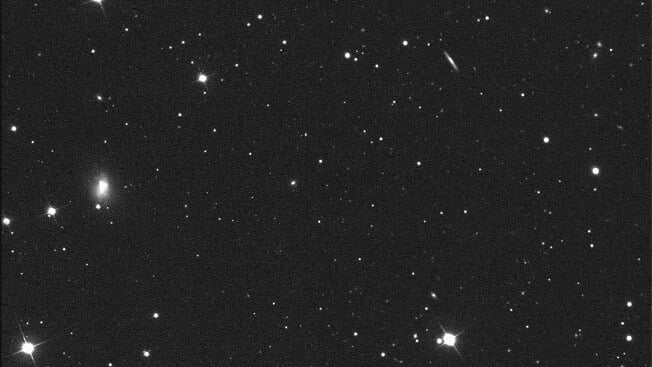
A group of students at the University of Texas has made a significant astronomical discovery while working on a homework assignment. Their research, focusing on the dwarf galaxy Segue 1, reveals that it harbors a supermassive black hole rather than the dark matter previously believed to dominate its mass. The galaxy, which orbits the Milky Way at a distance of just 75,000 light-years, has been identified as hosting a black hole estimated to weigh more than 450,000 solar masses.
This groundbreaking finding was presented by graduate student Nathaniel Lujan during a session at the American Astronomical Society meeting held in Anchorage, Alaska. Lujan utilized advanced computer modeling techniques learned in his Galactic and Gravitational Dynamics course to uncover this hidden cosmic giant within Segue 1.
Shifting Paradigms in Astronomy
Previously, astronomers believed that dwarf galaxies like Segue 1 were primarily held together by dark matter, an invisible substance that does not emit light and is challenging to detect. The study, recently published in The Astrophysical Journal Letters, suggests that black holes may play a more critical role in the dynamics of these galaxies than previously understood.
Historically, Segue 1 was first identified in 2006 using the Sloan Digital Sky Survey telescope in New Mexico. With a lack of stars to generate sufficient gravitational force, scientists had speculated that a dark matter halo surrounded the galaxy, maintaining its structural integrity. Lujan and his classmates began their investigation into Segue 1 as part of a practical exercise designed by professors Karl Gebhardt and Richard Anantua.
The students formed three groups to analyze different scenarios: one focusing on dark matter, another factoring in a hypothetical black hole, and a third examining star distributions. Their objective was to determine which model best matched the observed movements of stars within the galaxy. After isolating stars affected by the Milky Way’s gravity, they discovered that those near the center exhibited rapid, tight orbits indicative of a black hole’s presence.
Implications for Future Research
The results were surprising, leading Gebhardt to state, “I did not expect that. I said, ‘OK, well, we got to write this up.'” The research raises questions about the formation and evolution of dwarf galaxies and suggests that massive black holes could be more common than previously thought, even in these seemingly minor cosmic structures.
Black holes are defined by their intense gravitational pull, which is so strong that not even light can escape. The concept of black holes has evolved significantly in recent years, culminating in the 2019 imaging of one by the Event Horizon Telescope, which captured an image of a black hole in the Messier 87 galaxy, located approximately 53 million light-years away.
Lujan’s findings indicate that the black hole at the center of Segue 1 could be about ten times more massive than all the stars within the galaxy. This challenges the conventional understanding that the mass of a galaxy’s stars typically outweighs that of its black hole. Lujan theorized that Segue 1 might have been a larger galaxy in the past, with interactions with the Milky Way leading to a depletion of gas and stunted star formation.
Moving forward, Lujan plans to further explore dwarf galaxies previously thought to be dominated by dark matter for his doctoral thesis. He aims to incorporate advanced computing and artificial intelligence into his research. This could potentially lead to new insights into the nature of these celestial bodies.
The discovery also resonates with recent findings from NASA’s James Webb Space Telescope, which has identified similar early-universe galaxies characterized by massive black holes and sparse star populations. These “little red dots” may represent a new class of galaxies that challenge existing theories about galaxy formation and evolution.
As Karl Gebhardt emphasized, the study serves as a reminder of the importance of re-examining existing data with fresh perspectives. “What gets me really excited is that these galaxies that we’re finding here like Segue 1 may be analogs to the early universe,” he said. “Nature has found a way to build these things, regardless of our previous theories.”
This remarkable discovery not only highlights the innovative spirit of students but also underscores the evolving nature of astronomical research, with implications that may reshape our understanding of the universe.






